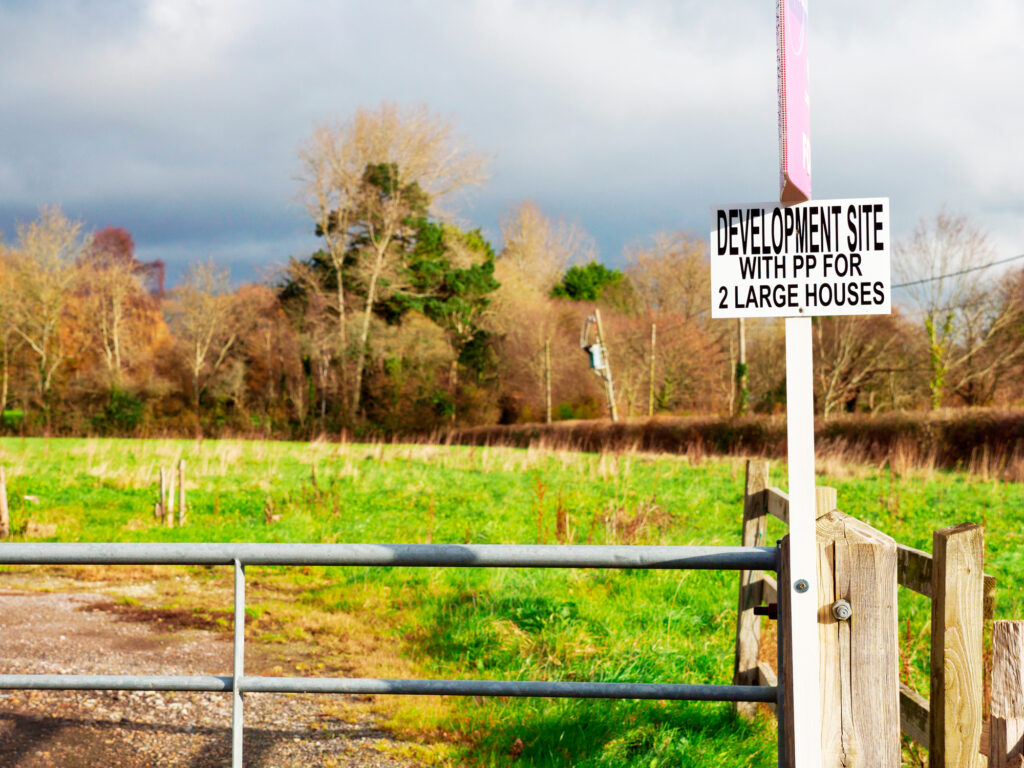
Use code BUILD for 20% off
Book here!
Use code BUILD for 20% off
Book here!Refusal of planning permission is a major setback for any self-build or renovation project.
It brings unwanted delay, cost and uncertainty, which will be all the more painful if these things haven’t been factored into your budget from the outset – but it doesn’t have to signal the end of your ambitions.
Rejection of a planning application might be predictable, especially if the council has expressed opposition to a scheme from the outset. But it can also be unexpected: it’s not unheard of for seemingly positive noises from the planning office to suddenly turn negative at the 11th hour.
In both cases, it’s important to look closely at how and why your scheme has been declined, so that you can take a well-informed decision on the best way to tackle the issues and move forward.
Your application will be dealt with either by planning officers, under delegated powers, or by councillors sitting on the planning committee.
Either way, if it’s turned down then a formal notice of refusal is sent out, which lists the reasons why the application has been declined. This will reference any policies the scheme is considered to conflict with – whether at local or national level.
Some councils like to cram all of these points into a single rambling paragraph. Others, more helpfully, split the issues up into numbered sections.
There’s a tendency to use a mixture of impenetrable jargon and vague language to describe their reasoning – so it can be difficult to pin down the precise problem. In these circumstances it’s always advisable to read the case officer’s report to the planning committee, where the concerns should be spelt out in more detail.
If this doesn’t yield any clarity, speak to the officer to determine exactly what their objections are and discuss whether there might be a route to gaining approval.
The reasons for a planning refusal can be divided up into three distinct types. Some points will deal with the fundamentals of whether a scheme is acceptable under policy.
Others will reference common issues, such as design, layout and impact on neighbours’ privacy.


And some will come down to practicalities, such as highway safety, flood risk and potential undesirable effects on protected trees or wildlife.
For new builds and conversions, the issue of principle can be mission critical. Where a council has an up-to-date Local Plan, this will define the circumstance where it’s permissible to construct new houses or convert buildings. Any departure from these policies will usually result in a refusal.
Typical stumbling blocks might be that the site is located outside the development boundaries, in an area of countryside where restrictive rules apply, or in an unsustainable location (meaning it’s too remote from key facilities and public transport).
Issues of principle can be difficult to overcome. If you get really stuck, then consider taking professional advice from a planning consultant. Policies do change through reviews of Local Plans and the adoption of Neighbourhood Plans.
In some cases, a council might not be able to demonstrate it has an adequate five-year housing land supply – this kind of situation can enable projects to go forward that might have otherwise been refused.
The second type of refusal covers a wide range of potential planning issues, from the design of the house and the external materials used, to its size and layout on the plot.
The effect of the scheme on local architectural character and neighbours’ light, outlook and privacy are also major considerations.
These reasons for turning down an application can be subjective and therefore often hinge on the opinion of the planning officer.
Just because they think a design would be out of character with its neighbours doesn’t necessarily make it true; and even if it was, the resulting change to the street scene may not be so harmful as to justify declining consent.
Refusals of this type immediately beg the question as to whether amendments could be made to the scheme that would render it acceptable. Altering a design or layout to try to meet a planning officer’s objections tends to go down well.
Oddly, it’s sometimes only after an initial refusal of permission that the planners are willing to offer constructive advice and suggest a way forward to permission.
In situations where the officer’s opinion seems unreasonable, or there’s no scope for compromise, going to appeal will enable an independent review of the matter.
This third type of refusal often involves input from a specialist consulted by the planning officer.
The best response is usually to go directly to that specialist to see if you can negotiate a way forward.
Technical problems flagged up by an ecologist, archaeologist or arboriculturist, for example, can be hard for a layperson to counter – so it’s advisable to take advice from a similar professional.
An appeal is unlikely to produce the result you’re after unless you have good evidence against the council’s expert’s opinion.
Bear in mind, though, that planning officers don’t have to follow their consultees’ advice. They are required to weigh up every part of the proposal – including the issues and the benefits.
Most planning decisions are made by case officers. They’ll put together a report on the application that culminates with a recommendation to approve or refuse. A senior officer will then sign the decision off.
Some councils have regular officer meetings, where the more finely balanced applications are chewed over to arrive at a consensus.
On occasions where there has been a positive response during the application, but things suddenly go negative at the last minute, the reason is probably intervention from a more senior officer or a group consensus going against your proposal.
Reading between the lines here, if the case officer – who probably knows the site and circumstances best – is happy with your proposal, then there are reasonable prospects for either negotiating an accord or successfully appealing.
Different councils have different approaches, but broadly speaking if a scheme is locally contentious it may well end up at committee. As with delegated decisions, the case officer writes a report with their recommendation.
The matter is then debated by the committee, with objectors and supports typically allowed to address the members.
As the councillors are laypeople representing their electorate, local politics inevitably plays a role in these decisions. A firm officer endorsement can be overturned by committee members on sometimes-fragile planning grounds.
So whenever an application undergoes this scrutiny, it’s important that you attend to see exactly what the concerns are.
Refusals at committee usually get translated by the planning officers, either during or afterwards, into the reasons that will be given on the decision notice. Watch out for changes of wording or emphasis in this situation, which could give clues as to how to proceed.
Should you decide to challenge a refusal, but then have your appeal dismissed, the resulting decision letter will set out in some detail the inspector’s in-depth analysis of the key issues and findings.
This can be a goldmine of information, as it may well indicate which aspects of the scheme are acceptable and which are not.
As such, it could give you some ammunition to help put together a revised design that accords with the inspector’s advice.
Councils are supposed to follow inspectors’ guidance, so preparing a resubmitted scheme that adheres to these parameters should stand a good chance of success.
